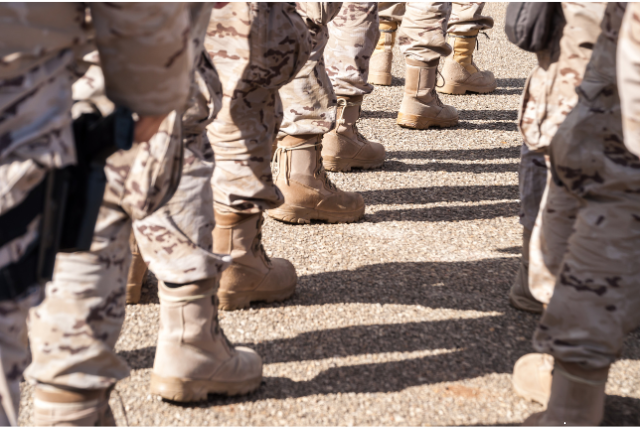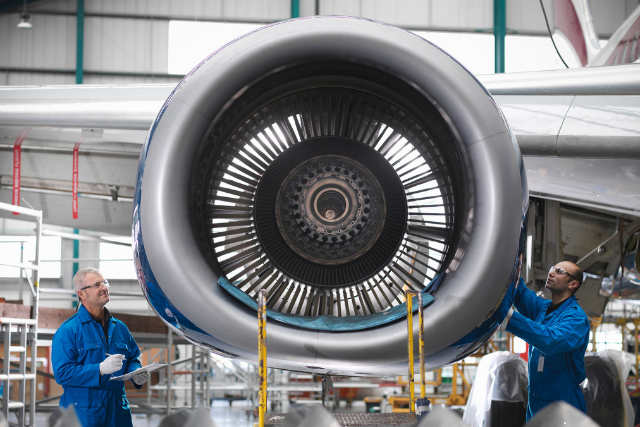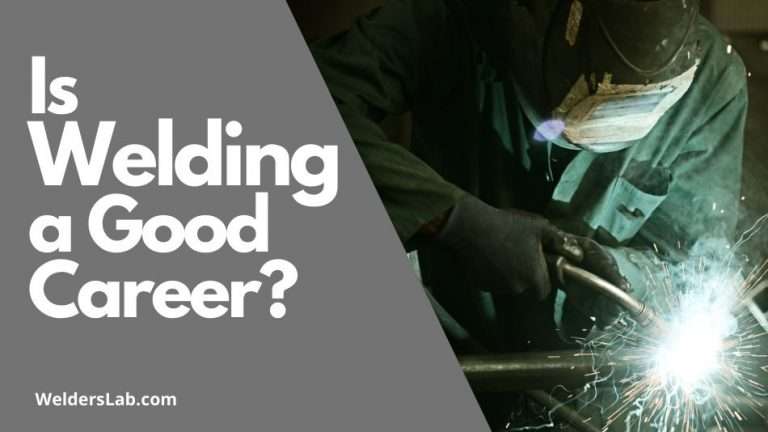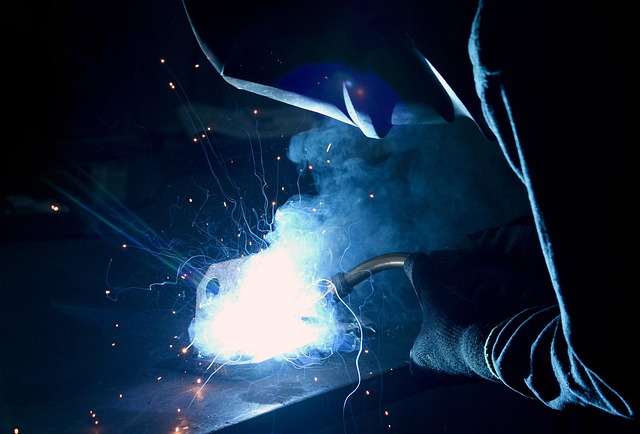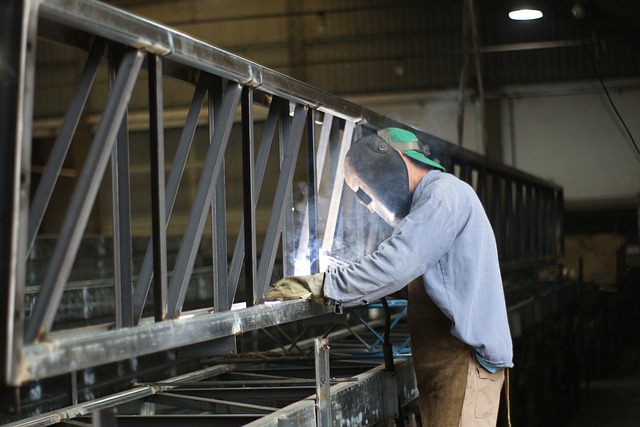How Much Do Aerospace Welders Make – A Complete Career Guide
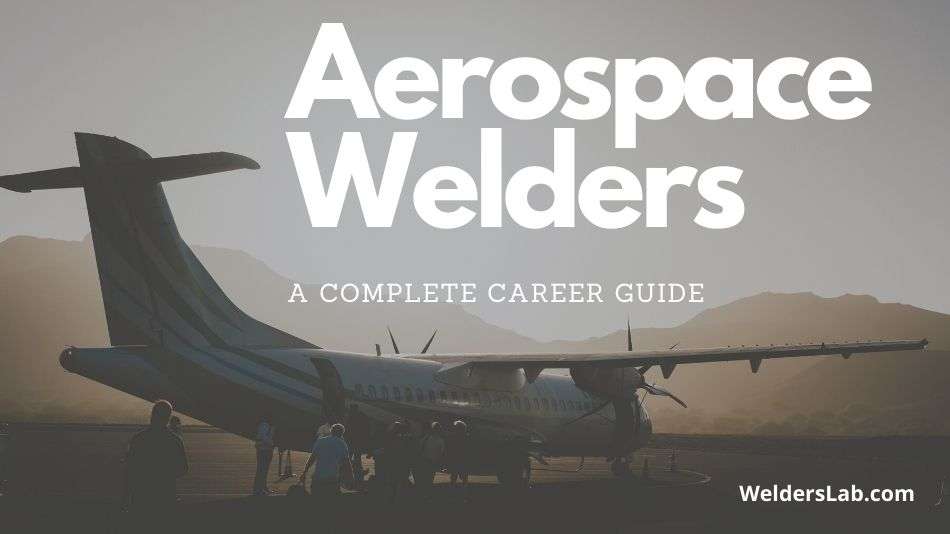
If you’re planning your welding career, it’s important to consider every aspect of welding and what type of area you want to work in. When it comes to welding, there is a myriad of career paths you can choose from.
For instance, you might decide to be a construction welder, structural steel welder, industrial welder, shipyard welder, military welder, rig welder, or even an aerospace welder. Honestly, these choices are just barely touching the tip of the iceberg when it comes to chasing a welding career.
How much to aerospace welder make? On average, most aerospace welders in the U.S. make an average of between $26 to $34 hour, or $5200 a month, or $63,740 a year. Aerospace welders typically earn above average rates compared to other welding positions.
In this guide, we will cover everything you should know about how much an aerospace welding career pays. We will discuss what the career involves and what you can expect overall should you choose to become an aerospace welder as part of your welding career.
I hope you’ll keep reading so you can learn the best information for aerospace welding in a career guide.
How Much Do Aerospace Welders Make?
Aerospace welding is an advantageous career. Even when you’re first starting out, you’re bound to make a decent salary with low-end salaries that are close to $30,000 annually.
The potential increases with skills and expertise as well as the field you are working in within aerospace.
The thing is, there are a lot of different categories of welders within an aerospace welding career. You can be a solderer, brazer, cutter, or even something else.
We have a lot of ground to cover as to just how much money you might be able to make as an aerospace welder and the different things you can expect to do in this career path.
A Glimpse into an Aerospace Welder Salary
If you look up any number of research materials available on this category, you will notice some inconsistencies across the board. Many research sites share only the statistics for the top of the line pay that you might earn in aerospace welding but I think it’s important to know both ends of the spectrum.
Here’s the thing, if you’re just starting out, you can expect that you are likely to earn less. However, as you continue to build on your career and improve on your talents and skills, you open yourself up to a much higher pay wage.
On the other note, there are aerospace companies that will hire welders in at top-dollar. I just don’t want there to be a misconception that every aerospace welder is going to start out making $30 an hour. Reality is, you may start out with far less.
The aerospace industry has long been one of the higher paying industries for many types of work, not just welding. It’s safe to say that welding fits the bill here as well.
Hourly Earning Breakdown
The first pay to consider is hourly pay. However, in most aerospace welding positions, this is just the beginning. You’re likely to have a much higher annual pay than hourly pay would suggest because of bonuses and other types of benefits.
The most recent statistic information shows a national average hourly pay rate of $30. The primary range for aerospace welding typically stands somewhere between $26 and $34 an hour. Remember, that these numbers are based on statistical information and averages.
The factors most likely to affect the pay you earn are as follows:
- Certification
- Education
- Skill level
- Experience in the field
- Location
- Performance
Some statistical information shows a range of only about $14 to $27 per hour. However, this information also shows that 90% of aerospace welders fall into the highest category.
Monthly Earning Breakdown
It would be fairly easy to figure a monthly wage earning based on these averages. However, what you need to remember is that many of these businesses offer bonus incentives. You also are more likely to receive quality benefits at lower prices.
These benefits could include:
- Pension
- Employer retirement contributions
- Health Insurance
- Life Insurance
- Paid leave
- Discounted memberships and activities
- Union affiliation and representation
These are just a few added perks that you may get to experience when you work in the aerospace industry.
If you come into the industry making an average of $30 per hour, your gross pay would equal $1,200 per week. When figured on a monthly basis, you’re looking at a potential of $5,200 per month, based on the average hourly rate.
Even if you come into the industry making a lower salary of somewhere like $17 an hour, you’re looking at a gross pay of nearly $3,000 per month.
These amounts do not take into consideration bonuses or overtime. This is based on average wages and working 40 hours a week.
Annual Earning Breakdown
Now, let’s look at the big picture. We like to see the hourly number but typically seeing an annual expected wage brings the dollar signs into focus so you understand the fairness of the wage overall.
Given the information above, the reported 2018 average salary for an aerospace welder was $44,360. Ultimately, you’re looking at a range that spans from $28,560 to $63,740, which is a rather broad range.
Only about 10% of aerospace welders fall into the bottom of the range. The majority of welders fall into the average or even above with a much higher salary.
If you are set to receive bonuses in the industry, they can also greatly vary in range. I haven’t included extensive bonus information because these will vary based on the company. The overall annual salary is a far more noteworthy and reliable number for the purposes of this guide.
Is Aerospace Welding a Dying Career?
Many would ask whether an aerospace welding career is worth it. There can be a lot of work involved, potentially long hours and risk, and you’re responsible for an airplane with these tasks. However, there are a lot of checkpoints for your work and it is a deserving career.
Someone has to do this work, much like someone has to do construction welding or military welding or shipyard welding. There are far worse welding careers you can find yourself in the midst of when compared to an aerospace welding career.
Every year, welding jobs continue to increase across the board. Projected growth in the field was expected to be at least 3% from 2018-2028. This growth was for solderers, brazers, and cutters alone.
The U.S. Bureau of Labor Statistics has reported that in the most recent 2-year range, they expect a growth rate of 26% for welding, and aerospace is part of that number. This is a long-spanning career that is certainly not dying but rather shows annual growth every single year.
How Hard is it to Become an Aerospace Welder?
How hard it is to get hired ultimately depends on how hard you’re willing to work and whether you keep up with changing technology and techniques as well as building on your skills. Welders that build their skills and are familiar with the latest technology are of course going to be the highest in demand.
However, the demand for welders continues to grow so any welder with logistical skills could perhaps find a way to get into the industry and then work hard to build their skills and improve from there to make themselves a valuable asset and build on their career.
It is recommended that if you intend to get into an aerospace welding career that you take the time to complete a program in regards to welding. There are several options here. Here are a few of them.
- Technical program
- Community college program
- Vocational program
- U.S. military training program
- Associate degree program
- Certification
It truly is very important for you to acquire a certificate and to keep your certificate up to date with necessary training. You can get an aviation welding certificate as well and there are certain requirements for keeping this active as well as maintaining accreditation.
You can acquire an assessment and certification from Nadcap, which is the National Aerospace and Defense Contractors Accreditation Program. This program offers standardized aerospace training and learning as well as an assessment and accreditation capability.
This certification is intensive and requires strict adherence to specific standards in order to both earn and maintain. The standards are pulled from the American Welding Society directives that encompass many aspects of welding.
Aerospace welding can include many different types of welding. This includes MIG, TIG, soldering, brazing, cutting, and more.
What Does an Aerospace Welder Do?
Ok, you can assume that as an aerospace welder, you would be working with aircraft and aircraft parts but what does an aerospace welder actually do? Well, we already mentioned that there are a number of different welding opportunities.
There are functions for every type of welder in the welding industry. There is a place for every technique and style and the job functions vary across the board.
Additionally, different types of welding techniques can be used to perform the same types of functions. MIG, TIG, and soldering welders can all work to meld pieces and parts together as necessary. They use a different process and technique but achieve the same results.
Ultimately, an aerospace welder will use the appropriate welding equipment to fuse pieces or parts together in many aspects of the welding industry. Metal parts are joined and formed together to create most aircraft, inside and out.
With the defense industry continuing to grow, there are welding aspects that may be geared towards these types of aircraft. They often have strict requirements and reporting that is necessary, especially when it comes to military aircraft.
Aerospace welders could be working on a variety of aircraft that could include both airplanes and space shuttles, it is not limited to airplanes and related aircraft alone. In this field, you may be required to work with various types of metal, including stainless steel and aluminum.
As a welder, you should understand that aluminum and stainless steel are both challenging materials to work with and that they require specific PPE when you are working with them in order to assure your safety and the safety of others around you.
Be sure that you are comfortable and practiced working with these materials as your job will depend on it. Arc welders and blow torches are the most common tools that are used in aerospace welding so be sure that you are comfortable with these tools.
You also may be required to perform maintenance on various welding machines and other machines used to complete the job. Familiarize yourself with maintenance and the machines that you could be using.
One other thing to keep in mind is that in aerospace welding, you could be welding in a number of different positions or environments. You may be required to weld over your head or in vertical or flat positions. You might have to weld in tight spaces.
The qualities of your weld will have to meet very specific standards. Aerospace welding is considered hazardous. Keep yourself up to date on all safety techniques and be sure that you are equipped with proper safety equipment at all times.
In some instances, aerospace welders could also potentially be working high in the air so this is another potential aspect of the job to keep in mind.
Aerospace welding is not for the faint of heart. It requires skill, focus, and strength to be functional in this field. Just keep in mind that it is not for everyone but it is perfect for some.
It may be necessary to relocate or be willing to relocate. This is quite common in the aerospace industry overall and the need pertains to aerospace welding as well. At a minimum, you should expect that some travel may be required for your career.
Education and Training Requirements for Becoming an Aerospace Welder
We previously touched on the various programs available for welding training and opportunities.
Where aerospace welding is concerned, there are different requirements from different positions within the industry. If you are entering a welding career with the intention of becoming an aerospace welder, go ahead and put in the work for certification that is specific to the field.
This could include the Nadcap program or another certification. Just keep in mind that the more training and skill you are able to build, particularly aircraft-related or with stainless steel and aluminum materials, the better of you will be when it comes to finding success in the industry.
Frequently Asked Questions
Can an Aerospace Welder Work for NASA?
The quick answer is yes. An aerospace welder may work for NASA. NASA could be the challenge that you push yourself towards. It can be difficult to get on at NASA.
Starting a career with NASA requires extensive background processes as well as being highly-skilled in aerospace welding. This is the career home to some of the most skilled welders in the world.
What Welding Industry is the Highest Paid?
Aerospace falls into some of the higher categories, but statistics show industrial pipeline welders, underwater welders, and military support welders as the top 3 welding types when it comes to the highest-paid options.
Can an Aerospace Welder Make 6 Figures?
It is highly unlikely that a welder of any kind will make 6 figures. However, it is always a possibility and you should never sell yourself short of reaching for your full potential.
The better the work you can turn out, the more likely you are to be able to make a higher salary.
How Many People Work in the Aerospace Welding Field?
Statistics show that the aerospace welding industry employs more than 1.6 million individuals across the nation.
Conclusion
If you’re looking for a valuable career that you could work in for the rest of your life, aerospace welding is certainly a viable option. It’s one of the better welding industries to work in when it comes to average pay compared to overall risk.
Sure, you could make quite a bit more working with the industrial pipeline or working with underwater welding but consider the risks of the job as well as the training and qualifications.
Aerospace welding is no easy career. It requires hard work and determination in order to be successful. However, if you’re willing to put in the effort it could easily be a rewarding career for many, as it consistently has been over the years.
Aerospace welding careers continue to be a growing field, despite the economic challenges over the years. This industry has consistently paid well across the board, welders included.
It’s true that aerospace welding is not for everyone. Again, it does require training and skills and the jobs can certainly be challenging. If you’re willing to continue to learn, adapt, and improve your skills, it’s certainly worth your perusal.

